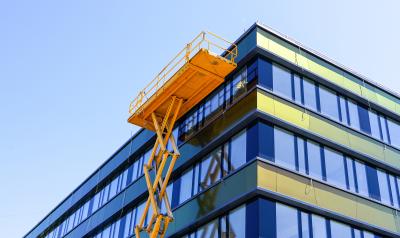Fire safety claims: What you need to know and where to start
Sophie Gibson is a future Property Pupil at Landmark Chambers. Barry Hembling is a construction Partner at Watson Farley & Williams LLP instructed on a number of combustible cladding related matters.
Posted:
Time to read:
Introduction
The draft Building Safety Bill ('BSB'), clause 126, published on 5 July 2021, proposes to expand the available causes of action and extend limitation periods to 15 years for damage or defects claims relating to buildings. A 15 year limitation period is proposed to apply retrospectively for actions under the Defective Premises Act 1972 and prospectively for civil liability for Building Regulation breaches resulting in damage (when section 38 of the Building Act 1984 is brought into force).
Many homeowners are only now discovering serious fire safety defects. If enacted, the expanded causes of action and extended limitation periods are likely to result in an increase in building safety related claims. Holding those responsible to account through litigation is complicated. This post sets out some of the key steps, and challenges, involved.
1) Preliminary Issues
Limitation periods
A claim must be brought within the applicable limitation period as explained in more detail in previous posts (1) and (2). In brief, Bull and Bright note relevant limitation periods for fire safety claims: for most contractual and tortious claims it is six years from accrual of the cause of action (Limitation Act 1980, ss. 2 and 5).
Once the limitation period has expired, the Civil Procedure Rules ('CPR') confirm that a defendant can apply for the claim to be struck out. For those still within time, it is important to act promptly. However, identifying potential litigants, clarifying facts and obtaining expert evidence takes time, particularly where documents or common parts are controlled by third parties.
Even on an ambitious timetable it is likely to take a minimum of three months to develop a claim to the level of detail required to commence litigation (acknowledged in BSB clause 126(7)).
As the court has discretion to extend limitation in very few cases, limitation can only be prevented from expiring by agreement or by issuing proceedings. While an agreement extending limitation need not follow a prescribed format, the agreement will only be enforceable where it is clear and unambiguous. To avoid the risk of an unenforceable agreement, parties may prefer to enter a standstill agreement. This freezes limitation until notice is given by either party to restart the claim. In the absence of agreement, court proceedings must be issued because only the issue of a claim form at court prevents limitation expiring.

Review and investigation
Evidence is usually obtained before proceedings are commenced but that is not always possible in time sensitive matters. In Naylor & Ors v Roamquest Ltd & Anor (‘Naylor’), discussed here, the claim referred to potential defects without identifying their nature, extent or location. The Technology and Construction Court (“TCC”) held it would be wrong to strike out the claim entirely without giving the claimants an opportunity to correct their deficiencies.
As a minimum, a claimant should obtain an expert report and speak to factual witnesses before commencing a claim. In fire safety cases, a good starting point is for an expert to advise on what material was used in the defective cladding system against what material should have been used. Investigations should also identify the parties involved and which contractual links exist.
2) Pre-Action Protocol
Pre-action protocols are “an integral and highly important part of litigation architecture” designed to enable parties to avoid litigation by agreeing a settlement or, in cases where litigation cannot be avoided, to support the efficient management of proceedings. Parties are required to comply with the relevant pre-action protocol before commencing proceedings. Pre-action protocols are subject-specific, the most relevant for fire safety defects being the Pre-Action Protocol for Construction and Engineering Disputes.
The pre-action protocol procedure is commenced by a claimant explaining in a letter of claim what has occurred, what losses have been suffered and why the defendant is responsible. The defendant responds by setting out its defence in a letter of response. The parties then meet to discuss whether their differences can be settled or narrowed and if not, how any court proceedings should be managed.
Where the limitation period is about to expire, the court will not expect parties to follow the pre-action protocol procedure if complying would result in a claim being time barred. In this scenario, a claimant may issue court proceedings but will be expected to apply to the court for directions. The court may then direct that the court proceedings be suspended to allow the parties to comply with their pre-action protocol obligations and resumed once they have done so. For example, in Swan Housing Association Ltd v Donban Contracting UK Ltd, the court granted a six-month suspension and in Naylor & Ors v Roamquest Ltd & Anor [2021] EWHC 567 (TCC), proceedings were suspended for four months.

3) Court Proceedings
Proceedings are commenced when the court issues a claim form summarising the nature of the claim, the remedy sought and the value in dispute. An issue fee is payable, which will be £10,000 for claims exceeding £200,000.
Once issued, the claim form must be served on the defendant (preferably personal service). A claimant only has four months to serve an issued claim form otherwise the claim form (together with the court fee) will lapse. If the limitation period has expired by the end of this four-month period, a claimant might be time barred from issuing a new claim and could lose the right to recover. Prompt service is therefore advisable.
A claimant provides more details about their case in the particulars of claim. Where particulars of claim are not served with the claim form, they must follow within 14 days.
Exchanging details about the claims
A defendant intending to defend all or part of a claim must file an acknowledgment of service and provide a defence, usually within 14 days of service of particulars of claim. Failing to file a defence allows a claimant to apply for judgment in its favour.
Where time sensitive claims have been issued prematurely, the claimant’s case may not be thoroughly developed. This makes the claim vulnerable to being struck out, if there are no reasonable grounds for bringing (or indeed defending) a claim.
Claimants sometimes raise new arguments after a defence has been served, which is not usually permitted. This creates a tension between the claimant, who wishes to finesse its position from that in the initial claim form and particulars of claim, and the defendant, who requires sufficient information to understand the case it has to answer.
The court seeks to balance the competing interests of the parties when exercising its case management powers, especially with fire safety cases. In Martlet Homes Ltd v Mulalley and Co Ltd, discussed here, the court refused to strike out a claim entirely simply because new claims were raised after a defence had been filed. The court allowed the particulars of claim to be amended even though limitation had expired on those new claims. In Advanced Control Systems Inc v Efacec Engenharia e Sistemas SA [2021] EWHC 573 (TCC), the court held that a claim should continue because it was not so vague and incoherent as to be abusive and vulnerable to being struck out.

After the exchange of written pleadings, the court will fix a trial timetable in consultation with the parties and confirm the remaining dates in the proceedings such as for the exchange of relevant documents, factual evidence and expert reports. The court has the power to revise the timetable (see e.g., PD 28 para.8.3) in the face of compelling reasons.
A pre-trial review might take place before the case is listed for trial, especially where the case is complex or the trial is expected to be lengthy. The aim is to ensure the trial proceeds efficiently by narrowing the particular areas of dispute as far as possible.
Currently court proceedings take about 18 months from issue to trial, with a High Court fire safety claim taking at least one to two weeks of trial time. Where proceedings arise from the same facts, separate claims might be consolidated into one trial but the court will not allow this if it would mean postponing a confirmed trial date, as was seen with a recent combustible cladding case Stonewater Ltd v BAM Construction Ltd.
5) Conclusion
Although it has been over four years since the Grenfell Tower tragedy, we still do not fully understand the implications of the issues raised by the fire and how such a tragedy could have occurred. Many who might never have considered court proceedings could now be considering bringing a claim to recover losses from any remedial works required to make their homes safe. New routes to recovery could shortly become available if BSB becomes law. Knowing where to start can be a challenge in itself. Calculating the limitation period should always be the first step; innocent parties risk losing the chance for justice if a limitation period has unknowingly passed.
--
How to cite this blogpost (Harvard style):
Gibson, S. and Hembling, B. (2021) Fire Safety Claims: What you need to know and where to start. Available at: https://www.law.ox.ac.uk/housing-after-grenfell/blog/2021/09/fire-safety-claims-what-you-need-know-and-where-start (Accessed [date])
Share:
